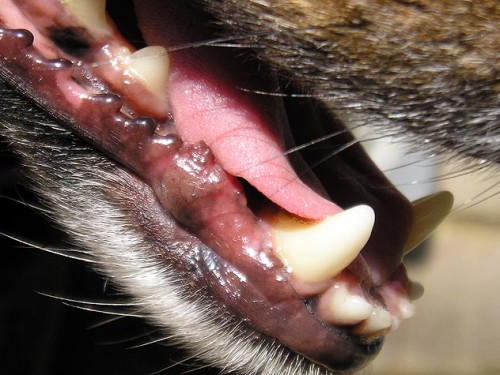At-Home Dental Care for Your Pet
Many pet owners dismiss their pets’ bad breath as simply “normal” or something to be ignored. However, bad breath is a hallmark of periodontal disease, a bacterial infection of the gums and supporting structures of the teeth. If you notice that your pet’s mouth has an odor and/or you observe discolored teeth, he or she may have developed some degree of periodontal disease. What starts as gingivitis (inflammation of the gums) can quickly lead to permanent loss of gum tissue, damage to ligaments and loose or missing teeth. Periodontal disease can cause bacteria from the mouth to enter the pet’s bloodstream and circulate through the heart, liver and kidneys.

At-home care can include the use of water additives, tooth brushing with specially-formulated toothpaste for pets, dental chew toys, kibble designed to clear and prevent the build-up of plaque and paying special attention to any changes your pet exhibits. As a pet owner, you should examine your pet’s mouth at least once a week to look for signs of swollen or bleeding gums (gingivitis), brown buildup on teeth (plaque/tartar) and abnormal lumps, bumps or swellings. Be sure to examine the back teeth (molars) by lifting the lip to expose the outside surfaces of the teeth. Also, observe the color of your pet’s gums. The gums should be shiny and pink — not white or dark red.
If you notice any usual signs or symptoms or changes in your pet’s mouth, consult your veterinarian to schedule an exam. He or she will examine your pet, inform you of any problem areas and make treatment recommendations. You might need to schedule a professional dental cleaning, according to your veterinarian’s recommendations for your pet’s particular breed and condition.
« Tarry or Bloody Stool in Dogs Next Post
Take Your Dog To Work Day: Tips, Tricks and Essential Advice »





